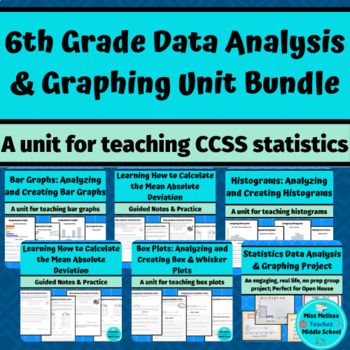6th Grade Statistics Data Analysis & Graphing Unit- covers all CCSS SP standards
- Zip
What educators are saying
Products in this Bundle (6)
showing 1-5 of 6 products
Description
This bundle includes all you need to teach the 6th grade CCSS for statistics & probability- print and go, NO PREP needed. It will walk you and your students through analyzing and creating bar graphs, dot plots, histograms, and box plots. Key terms are embedded naturally throughout the units for students to easily learn and apply them.
Each mini unit has 3 worksheets to organically introduce the graphs to your students, 1 guided practice worksheet, 1 independent practice worksheet that uses real-life class data, key terms pages, and answer keys. After completing the mini units, your students will be ready for the fun, real-life group project to show off their mastery of statistics.
The following products are included in the bundle:
- Teaching Bar Graphs Mini Unit
- Teaching Dot Plots Mini Unit
- Teaching Histograms Mini Unit
- Teaching Box Plots Mini Unit
- Learning How to Calculate the Mean Absolute Deviation
- Statistics Project: Data Analysis & Graphing





